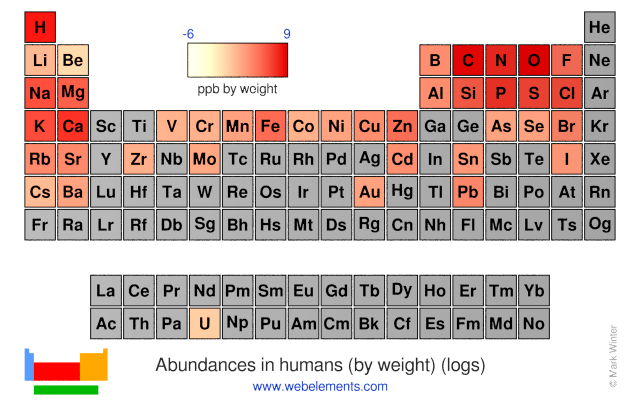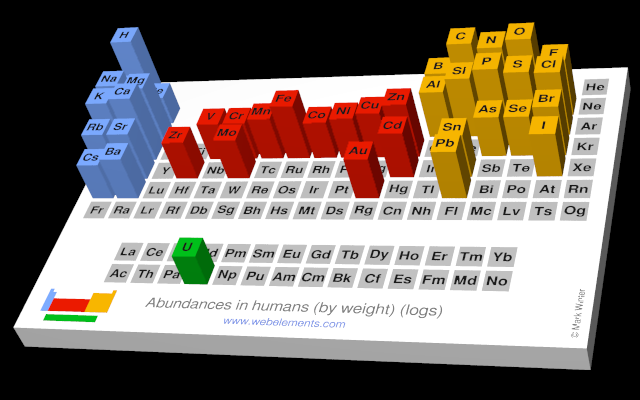Silicon - 14Si: biological information
Silicon is probably essential in higher plants and perhaps to mammals. Diatoms, some protozoa, some sponges, and some plants use silicon dioxide (SiO2) as a structural material. Silicon is known to be required by chicks and rats for growth and skeletal development. Silicon is not particularly toxic but finely divided silicates or silica cause major damage to lungs.
Levels in humans
The abundances of the elements in humans.
- Human abundance by weight: 260000 ppb by weight
- Human abundance by atoms: 58000 atoms relative to C = 1000000
How much silicon is in your body? Find out here.
You can use this form to calculate how much silicon your body contains. Enter your weight in either kilograms or pounds and click the "Calculate" button. You must enter a number, not text! Elements for which there are no data will always give a value of zero for the weight, no matter what you put in the weight box.


Hazards and Risks
Hazards and risks associated with silicon:
Silicon is not particularly toxic but finely divided silicates or silica cause major damage to lungs. Long term exposure to silicates such asbestos is a severe health problem.
References
- J.E. Huheey, E.A. Keiter, and R.L. Keiter in Inorganic Chemistry : Principles of Structure and Reactivity, 4th edition, HarperCollins, New York, USA, 1993.
- S. Budavari (Ed.) in The Merck Index, 11th ed., Merck, USA, 1989.
- N.N. Greenwood and A. Earnshaw in Chemistry of the Elements, 2nd edition, Butterworth, UK, 1997.
